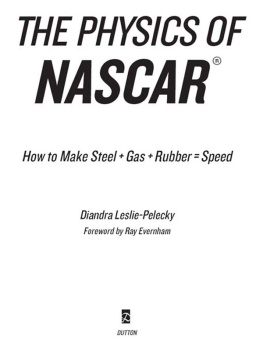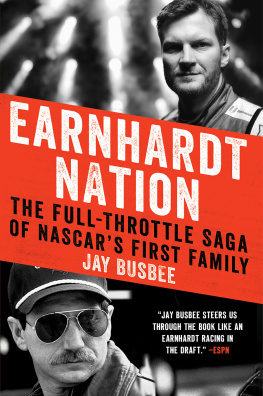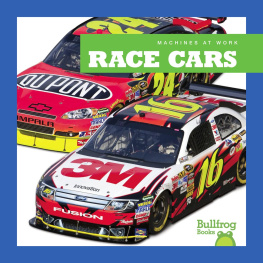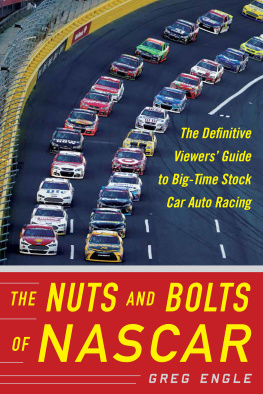

Published in 2015 by Britannica Educational Publishing (a trademark of Encyclopdia Britannica, Inc.) in association with The Rosen Publishing Group, Inc.
29 East 21st Street, New York, NY 10010
Copyright 2015 by Encyclopdia Britannica, Inc., Britannica, Encyclopdia Britannica, and the Thistle logo are registered trademarks of Encyclopdia Britannica, Inc. All rights reserved.
Rosen Publishing materials copyright 2015 The Rosen Publishing Group, Inc. All rights reserved.
Distributed exclusively by Rosen Publishing.
To see additional Britannica Educational Publishing titles, go to rosenpublishing.com.
First Edition
Britannica Educational Publishing
J. E. Luebering: Director, Core Reference Group
Anthony L. Green: Editor, Comptons by Britannica
Rosen Publishing
Hope Lourie Killcoyne: Executive Editor
Natalie Regis: Editor
Nelson S: Art Director
Nicole Russo: Designer
Cindy Reiman: Photography Manager
Library of Congress Cataloging-in-Publication Data
NASCAR and its greatest drivers/edited by Natalie Regis.
pages cm.(Inside sports)
Includes bibliographical references and index.
ISBN 978-1-6227-5591-2 (eBook)
1. Stock car racingJuvenile literature. 2. Automobile racing driversJuvenile literature. 3. NASCAR (Association)Juvenile literature. I. Regis, Natalie, editor of compilation.
GV1029.9.S74N3755 2015
796.72dc23
2014022805
On the cover, page 3: Jimmie Johnson. Robert Duyos/Sun Sentinel/Tribune News Service/Getty Images
Interior pages background image EPG EuroPhotoGraphics/Shutterstock.com; Silhouettes iStockphoto.com/Big Ryan, iStockphoto.com/artpro63; back cover, pp. 7180 baranq/Shutterstock.com.
CONTENTS
T he thrill of a NASCAR race starts long before the green flag waves. With the sight of the colorful cars, the sound of the engines starting up, and the smell of tires burning on the asphalt, fans and drivers alike experience pure adrenaline from beginning to end.
Soon the drivers are introduced individually. They wave to the crowd as they walk across the track, and then they crawl into the windows of their cars. The crowd stands up to cheer, yell, clap their hands, and whistle for their favorite driver. Race time is close.
Finally, there is the announcement Drivers, start your engines! The air is filled with the sound of dozens of roaring, revving engines. The pace car leads the NASCAR drivers out, giving them a chance to warm up. Then the pace car pulls over and the green flag is waved. The race has begun! Cars speed up, engines scream, and the track is full of skilled drivers jockeying for the lead.

Brad Keselowski ( right ) and Jimmie Johnson ( left ) lead a Sprint Cup race in November 2012. Beelde Photography/Shutterstock.com
This volume is a look into the history of NASCAR, its rules, and its most famous drivers. It has everything a fan needs to know about NASCARthe fastest, most exciting race in the U.S.A.
F rom its humble beginnings on the beaches of Florida, NASCAR racing has grown to become one of the most popular spectator sports in the United States. NASCARin full, the National Association for Stock Car Auto Racingis the premier organization in American stock-car racing, which today features purpose-built race cars that outwardly resemble standard-model cars. Its a far cry from the sports early days, when drivers might race a car they drove to the track.
NASCAR S B EGINNINGS
Stock-car racing is said to have originated during the Prohibition period (191933), when the manufacture, transportation, and sale of alcoholic beverages was outlawed in the United States. Illegal still operators, needing cars capable of more than ordinary speed to evade the law while transporting liquor, tuned and altered ordinary passenger automobiles to make them faster. After the end of Prohibition, these cars were raced for pleasure, particularly in the southeastern states.

Car racing has a long history, beginning with the first gas-powered automobiles. Fox Photos/Hulton Archive/Getty Images
Stock-car racing became popular on the shores of Daytona Beach, Fla., in the 1930s. The key figure on the Daytona racing scene was Bill France, an auto mechanic and sometime race-car driver who organized stock-car races on the beach throughout the 1930s and 40s. In 1947, after several unsuccessful attempts to create a series of races that would determine a national champion, France created the National Championship Stock Car Circuit (NCSCC), a yearlong series of 40 races held across the southeastern United States. France was responsible for establishing and enforcing the technical regulations that governed the cars, and he created a scoring system that would award drivers points used to determine a series champion. He also organized and promoted each race and awarded cash prizes to the winners of races and to the series champion.

Bill France Sr, NASCARs founder and first president, walks down the Daytona International Speedway in 1968. Eric Schweikardt/Sports Illustrated/Getty Images
Although the NCSCC was successful, France had greater ambitions. He organized a series of meetings in December 1947 with the goal of establishing a still-larger stock-car-racing series. What emerged from those meetings was NASCAR, which replaced the NCSCC. France was its first president. The first NASCAR race was held on January 4, 1948, in Pompano Beach, Florida. In February of that year NASCAR was incorporated, with France the primary stockholder.
In 1949, NASCAR changed the rules governing the cars. Up to that time, modifiedscars varying in age and in the mechanical modifications made to them for the purpose of racingwere allowed to compete. Starting in June 1949, however, only late-model (recently manufactured) stock cars were permitted. Races that year were called Strictly Stock races, and Red Byron became the series champion.
N OTABLE W OMEN OF NASCAR S E ARLY D AYS
S ARA C HRISTIAN
Sara Christian (19181980) finished 14th of 33 drivers in NASCARs first Strictly Stock race, held in Charlotte, N.C., on June 19, 1949. She also took part in six other races in 194950, earning two top-10 finishes. She was voted Woman Driver of the Year in 1949.























